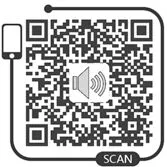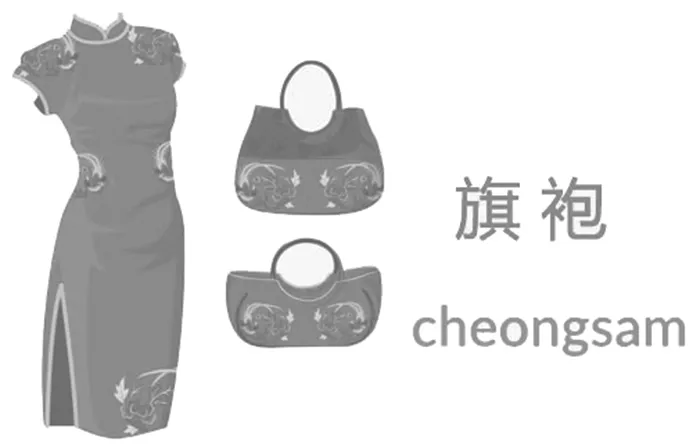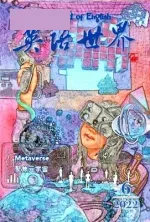中国服饰文化
2022-03-22杨亦彬
译/杨亦彬

扫码听读
As a vital part of Chinese civilization, traditional costumes play an important role in the country’s history and culture.Nowadays, traditional attires are only worn during certain festivals, ceremonies or religious occasions.However, they are often seen in Chinese television serials and movies.Many of the country’s ethnic minorities also wear traditional costumes in their daily lives.
传统服饰是中华文明的重要组成部分,在中国历史和文化中扮演着重要的角色。如今,人们只在特定节日、仪式或宗教场合穿着传统服饰。但在中国的影视剧中,传统服饰依然十分常见。许多少数民族也会在日常生活中穿着他们的传统服饰。
2Based on historical discoveries, Chinese clothes date back to the later era of Paleolithic Times (1.7 million years ago—the 21st century BC).Materials used were of animal skins and decorations were of small stones and animal teeth.The “real”clothes were not invented until about 5,000 years ago by the Yellow Emperor.By the Shang Dynasty (17th century BC—1046 BC), the basic features of traditional Chinese attire were created, as well as the general pattern of blouse plus skirt.Later, the long gown appeared during the Zhou Dynasty (1046—256 BC) and it coexisted with the blouse-skirt combinations for thousands of years, improving further as time passed.
2历史研究发现,中国的服饰可以追溯到旧石器时代晚期(170万年前—公元前21世纪)。当时人们以兽皮为面料,以小石子或动物牙齿做装饰。直到至今约5000年前,黄帝才发明了真正意义上的服装。商代(公元前17世纪—前1046)形成了中国传统服饰的基本特征以及上衣下裳的普遍搭配模式。此后,长袍于周代(公元前1046—前256)出现,袍服制与上衣下裳组合并存数千年之久,随着时间的推移不断发展。
3In addition to the basic features and patterns, traditional Chinese attires have many other features like appearance,cutting, decoration, color and design,etc, all of which changed over the various dynasties.For example, black is the most dignified color in the Xia Dynasty(21st—17th century BC), white in the Shang Dynasty and red in the Zhou Dynasty.They also vary based on one’s political position, social status, occupation and gender, etc.For instance,dragon embroideries and bright yellow can only be used by emperors most of the time; in the Tang Dynasty (618—907 AD), purple official costumes are for the fifth or higher rank officials; in the Qing Dynasty (1644—1911 AD), the higher a person’s social rank or the richer one was, the more embroideries and borders there were on his attires.
3在基本的特征和样式外,中国传统服饰的许多其他特征——如外观、剪裁、装饰、色彩、图案等——在朝代的更迭中不断改变。比如,夏代(公元前21世纪—前17世纪)最尊贵的颜色是黑色,在商代则是白色,周代是红色。服饰也会因穿着者的政治地位、社会阶层、职业和性别等因素而不同。比方说,龙纹刺绣和明黄色通常为皇帝专用;在唐代(618—907),紫色官服为五品及以上官员专用;在清代(1644—1911),一个人社会地位或富有程度越高,其服饰上的刺绣纹样和镶边也就越多。
4Although the fashion trend changes over time, there are several types that are popular till today both at home and abroad.
4尽管时尚潮流不断改变,今天,仍有数种中国传统服饰在海内外广为流行。
汉族传统服饰(汉服):汉服是指自黄帝即位(约公元前2698年)至明朝(1368—1644)晚期汉族人民穿着的服装。其风尚在汉代得到发展并大为盛行,因而得名“汉服”(Han Fu,fu在中文里意为“服装”)。其特征为交领右衽、广袖宽袍、隐扣系带。汉服尽管纹样简朴,却能给不同的穿着者带来各异的感受。
Traditional Han Chinese Clothing(Han Fu):It refers to the attire worn by the Han people from the enthronement of the Yellow Emperor (about 2698 BC)till the late Ming Dynasty (1368—1644 AD).It became known as the Han Fu(“fu” means “clothes” in Chinese)because the fashion was improved and popularized during the Han Dynasty.It is usually in the form of long gown,cross collar, wrapping the right lapel over the left, loose wide sleeves and no buttons but a sash.Although simple in design, it gives different feelings to different wearers.

Chinese Suit (Tang Zhuang):It is a combination of the Manchu male jacket of the Qing Dynasty and the western style suit.It is usually straight collared,with coiled1coil盘绕,卷成卷。buttons down the front.Its color and design are in traditional Chinese style but the tailoring is western.
Cheongsam (Qi Pao):Originated from the Manchu female clothes, it evolved by merging with western patterns that show off the beauty of a female body.Its features are straight collar, strain on the waist, coiled buttons and slits on both sides of the dress.Materials used are usually silk, cotton and linen.Cheongsam is the most popular Chinese attire in the world today.
中式套装(唐装):唐装融合了清代满族男士上衣和西式正装,通常为立领,前襟正中列有盘扣。其颜色和纹样均为中国传统风格,但采用了西式的剪裁方法。
长衫(旗袍):旗袍源自满族妇女服装,在演进过程中融入了西式剪裁,以彰显女性身形之美。旗袍的特点为立领、收腰、盘扣,且在衣裙两侧均有开衩。其材质通常为丝绸、棉和亚麻。旗袍是当今世界上最为流行的中式服装。
中式紧身套装(中山装):中山装由孙中山先生设计,是西服与中式服装的融合产物。其特点为翻领、有四个带盖口袋。自1949年新中国成立至20世纪80年代,中山装是中国人的主要服装。直至今天,在阅兵仪式等重要场合,国家领导人仍穿着中山装出席。
Chinese Tunic Suit (Zhongshan Zhuang):Also called the Yat-sen Suit,it is designed by Dr.Sun Yat-sen2原文为“孙逸仙博士”。实际上,孙中山并无博士称号,英文习惯称其为Dr.Sun Yat-sen,是指其于1892年获得的医师(Medical Doctor)头衔,因此,按照中文习惯译为“孙中山先生”更加恰当。by combining the western-style suit and Chinese attire.It has a turn-down collar and four pockets with flaps.It is the main attire from the founding of the People’s Republic of China in 1949 till 1980’s.The country’s leaders still wear it today when attending important occasions, such as military parades.
Other Types
Traditional Manchu Clothing: It is the traditional dress of the Manchu ethnic nationality, usually in the form of long gown and sometimes with a jacket or waistcoat outside.Since Manchu is the leading class of the Qing Dynasty and their dresses were strongly promoted,this kind of clothes was very popular in that period.The characteristics are round or straight collar, fasten with buttons from the right collar and a sash on the waist, two or four slits, and tight sleeves with cuffs shaped like horse hoofs3清朝服饰的袖是在本来就比较狭窄的袖口的前边,再接一个半圆形的“袖头”,因为形状像“马蹄”,所以人们都习惯地叫它“马蹄袖”,满族人则称它为“哇哈”。cuff袖口。.
其他种类
满族传统服饰:满族的传统服装通常为长袍,有时外面套一件马褂或马甲。由于满族是清代的统治阶级,且其服饰得到大力推广,满族服装在此时期盛行。其通常为圆领或立领,衣服由领子右侧的盘扣和一条腰带系紧,下身有两个或四个开衩,窄袖的袖头形如马蹄。
Traditional Clothing of the Other Ethnic Minorities: In addition to Manchu, the country has 54 ethnic minorities and each of them has their own unique costumes.Unlike the traditional Han Chinese costumes, these costumes are still widely worn today.Basically, they can be divided into two types: long gown and short coat with pants or skirt.They usually wear long gowns with hats and boots; others prefer short coat and generally wrap their head with cloth and wear shoes.People wearing the same type of clothes can be further distinguished by the costume details like the structure,craft and style, etc.Take the long gown for instance.The Mongolian and Tu nationalities prefer high collared gown with buttons down the front; the Tibet and Monba groups wear collarless gown with buttons on one side and the Uygur love those with buttons on the right.
其他少数民族传统服饰:除满族以外,中国还有54个其他少数民族,他们都有各自独特的民族服饰。不同于汉族传统服饰,这些民族服饰至今仍被人们广泛穿着。这些服饰可以大致分为两类:一类为长袍,另一类则为短衣和裙或裤的搭配。有些民族穿着长袍、搭配帽子和靴子;另一些民族则穿着短上衣,常常包裹头巾并搭配鞋子。根据服饰结构、工艺、风格等细节,可以进一步区分穿着同类服饰的诸多民族。以长袍为例,蒙古族和土族偏好高领袍,其扣子位于前襟中央;藏族和门巴族则穿着无领袍,其扣子位于前襟的一侧;维吾尔族则偏好扣子位于右侧的长袍。
Officials’ Uniform: Unlike modern China, almost all kinds of officials in ancient times had uniforms.They are strictly distinguished by colors, embroidered patterns and hats, etc.For instance, in the Ming Dynasty, the embroidered pattern on a first rank civil officer’s uniform was a crane, second rank a golden pheasant,third rank a peacock, fourth rank a wild goose, fifth rank a silver pheasant, sixth rank an egret, seventh rank a “purple mandarin duck”, eighth rank an oriole and ninth rank a quail.
Traditional Wedding Costumes: Chinese traditional wedding costumes vary in different dynasties and time periods.However, they are red most of the time as red is considered lucky, happy and auspicious in the country’s culture.The most well-known are red chaplet and official robes, which are still widely worn today by the newly-weds in traditional style wedding ceremonies or for taking wedding photos.■

官服:与现代中国不同,古代中国的官员几乎都有各自的官服。官员根据服装颜色、刺绣补服纹样、官帽等严格区分等级。比如说,在明代,一品文官的刺绣图案为仙鹤,二品文官为锦鸡,三品孔雀,四品云雁,五品白鹇,六品鹭鸶,七品“紫鸳鸯”,八品黄鹂,九品鹌鹑。
传统婚服:中国传统婚服根据朝代和时期的不同而各异。不过通常情况下婚服都使用红色,因为按照中国文化,红色是幸运、快乐和吉祥的颜色。最为人熟知的传统婚服有红色头冠和官服长袍,它们至今仍是新婚佳人举行传统婚礼或拍摄婚纱照时的热门着装。 □
